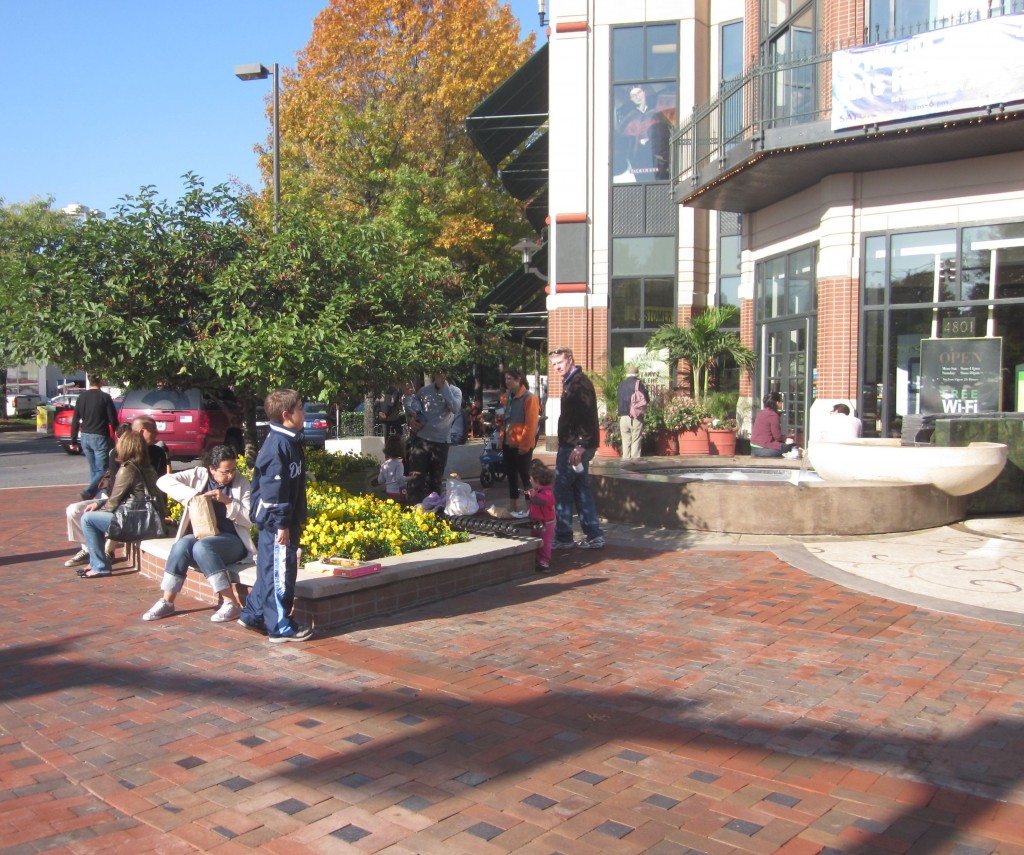Everyone has an opinion about the new fountain at what people consider the “town square” of Bethesda–the plaza in front of Barnes & Noble Bookstore.
As reported online in the Bethesda Patch most of the commenters think it was at best unecessary and at worst, a scheme to keep people from sitting out in front of the store. You can chime in as well by voting online. Unfortunately, out of 209 votes so far, 121 people (57%) don’t like it.
This is not a Bethesda phenomenon. In fact, just last week, the New York Times reported that Portland, Maine has removed a sculpture called Tracing the Fore. The article quotes Shawn McCarthy, who owns the bar across the street from where the artwork stood.
“In one way it was a conversation piece, but the conversation just was never positive.”
But what are we talking about these days? In earlier eras, we shared a language of methaphor and images, as well as a way of looking at public space and events. Today, victory columns and story-telling pediments are irrelevant media. Even our view of history has changed; the great men are gone. And the lines between public and private space haveblurred. Streets and spaces that are designed to appear public may be adjunct commercial space.
The interesting thing is that this Bethesda space hardly needs public art, let alone a contentious scultpure. As one Patch commenter noted, this is percieved as Bethesda’s town square, an active intersection of streets, bikes routes, sidewalks, and shops. It already had almost everything that urbanist William H. Whyte claimed you needed for a good urban space–sun, touchable water, food–just needed some movable chairs.


georgek
First, you shrug your shoulders and wonder what did they actually DO? Is the fountain bigger than before (remember the intersection was re-sculpted to claim more sidewalk area at this corner, after the original fountain had been built to fit a tighter site). No. Does the water do something dramatically different. Again, no.
The corner it is a part of is by lack of any competition, Bethesda’s clock in Grand Central Terminal. The convergence of the bike trail, Bethesda’s two best retail streets and a Barne’s & Noble make this the obvious choice. But did it need a fountain?
I think this fountain exercise shows a lack of understanding about what drives this space, and a struggle with what is meaningful as an urban design element.
If this was to be found in any one of the banal Optional Method plazas from 25 years ago, it would just be unfortunate. That it comes from the hand of a developer know for well executed urban design is astonishing.
BlueHost Coupon
Thats good, your blog is cool, i like it. Thanks for the efforts my friend.